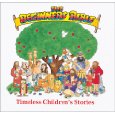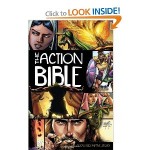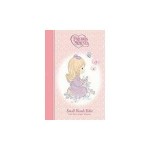Jessica could not understand why her ten year old daughter kept leaving her Bible at home, or at church, or under her bed. Margaret had always been a very responsible child, and had read that Bible cover to cover hundreds of times since they gave it to her at her baby dedication. Â So mom sat daughter down for a talk about responsibility and taking care of ones things.
But not long into the discussion it became evident that Margaret loved her church, Sunday School class, and even reading the Bible — but the Precious Moments Bible was too “babyish.” Jessica knows that after this talk with her daughter that she needs to buy her a new one, but after over an hour in the Christian book store looking at over forty children’s Bible she doesn’t know which one to buy.
Where to Begin?
When we are discussing choosing the right Bible for us or our children, they generally fall into three categories:
- Literal translation. Attempts to keep the exact words and phrases of the original. It is faithful to the original text, but sometimes hard to understand. Keeps a constant historical distance. Examples: King James Version (KJV), New American Standard Bible (NASB).
- Dynamic equivalent (thought for thought) translation. Attempts to keep a constant historical distance with regard to history and facts, but updates the writing style and grammar. Examples: New International Version (NIV), Revised English Bible (REB).
- Free translation (paraphrase). Translates the ideas from the original text but without being constrained by the original words or language. Seeks to eliminate historical distance. Readable, but possibly not precise. Examples: The Living Bible (TLB), The Message. [1]
 and as they mature move toward a “dynamic equivalent” translation with study notes or graphics.
and as they mature move toward a “dynamic equivalent” translation with study notes or graphics.1) The first thing (other than doctrine of course) to consider is readability.  If your child is reading on a first grade level and you give him him a Bible written at the seventh grade level it will be a struggle for him to read it. The child may grow frustrated and will dread “having” to read the Bible.  The best Bible for your child is one that they can read all by themselves. Which means that parents should be evaluating if their child’s Bible is age appropriate every year.  It may also be too easy because they have outgrown it.
How Will It Be Used?Â
2) Another thing to consider when choosing a Bible for your child is how it will be used. Â If you are focused on encouraging them to have a devotional time at home then you may give them a devotional Bible. These types of Bibles will more than likely only have some of the stories of the Bible such as The Bible in 365 days.  But when they get to a worship service or even Sunday School they may not be able to find the specific text that is being studied that day. So if you are about to load up the minivan and go to church you may want to encourage your child to grab
But when they get to a worship service or even Sunday School they may not be able to find the specific text that is being studied that day. So if you are about to load up the minivan and go to church you may want to encourage your child to grab
their 252 Backpack Bible or something similar.
It will also be easier for your child to have the same translation that is being taught from. Â (Sorry, “KJV only” people). You can also ask their Sunday School teacher which translation they use — this may be helpful in your decision making process.
Is It Cool?Â
3) Also consider if it is a Bible they would want to read? This is what I will refer to as the “coolness” factor. Margaret didn’t want to carry around a pink Precious Moments Bible because it was not cool for her to do so. Â It may be a full dynamic equivalent and contain all of the Bible but it’s Precious Moments. So, not only does the doctrinal content matter, but if you want your kids to carry and habitually read their Bible then you have to consider the outside cover.
David C.  Cook publishing knocks this idea out of the park with “The Action Bible.” Â It is the Bible written as a comic book. Simply awesome. Also, swallow your pride and consider that what you think is cool, may not be what your kids think is cool. It may be worth a trip to the local Christian bookstore with your child and pick it out together. If you do this regularly, it could be a way for you to discuss your child’s relationship with Christ.
Cook publishing knocks this idea out of the park with “The Action Bible.” Â It is the Bible written as a comic book. Simply awesome. Also, swallow your pride and consider that what you think is cool, may not be what your kids think is cool. It may be worth a trip to the local Christian bookstore with your child and pick it out together. If you do this regularly, it could be a way for you to discuss your child’s relationship with Christ.
If you are really confused, that’s ok. The big idea is that you are seeking to guide your children toward God, and he will bless your actions. Remember to lead by example; let them see you reading your Bible, and discuss with them what you are reading. Also, one of the best ways to make this habit stick is for the family to have a regular time of Bible reading and prayer.

Good stuff. Thanks Drew.
….even got a shout out to the KJV only crowd.
Love reading your Blog.